If you’re new to ATVs and UTVs, you might feel overwhelmed by the numerous models available. However, as you will learn in this article, each type is uniquely designed for specific uses and terrains.
We will examine the unique features of each ATV and UTV type and rate how well they perform in common riding scenarios. This will help you select a model that best matches your specific requirements and preferences.
What Is the Difference Between an ATV and a UTV?
This guide includes both ATVs (All-Terrain Vehicles) and UTVs (Utility Terrain Vehicles, also known as side-by-sides or SxS).
Technically speaking, a UTV is not an ATV. Though the term ATV is often used broadly to refer to any such off-road vehicle, this post will cover both ATVs and UTVs for clarity and comprehensive information.
- Simply put, an ATV is a four-wheeled off-road vehicle that uses handlebars for steering and has a straddled seating position like on a motorcycle.
- On the other hand, a UTV is also a four-wheeled off-road vehicle but is operated with a steering wheel. It features individual bucket seats for passengers, all within a protective roll cage.
Related: ATV vs. UTV – Which One Is Better for You?
Recreational and Utility ATV

The majority of adult-sized ATVs on the market are what are known as recreational and utility ATVs. These are vehicles designed to offer decent overall performance in a wide range of riding applications that meet the average rider’s needs.
Characteristic features of a Recreational and Utility ATV:
- Will fit one person – the rider
- Designed with reliability and flexibility in mind.
- They are smooth, easy, and comfortable to ride.
- They offer good traction and accessibility in most typical riding applications.
- Modifications are typically required for more extreme applications such as deep mudding.
- It can tow about 1200 lbs and carry about 250 lbs of cargo on front and rear cargo racks.
Related: 18 Typical ATV Features Explained and Beginner Guide: ATV Controls Explained (With Photos)
Usage | Not Suited | Suited | Well Suited |
Recreational trail riding and exploring | X | ||
Farm work (utility) | X | ||
Hauling cargo, hunting, camping | X | ||
Racing | X | ||
Mudding | X | ||
Rock crawling | X | ||
Accessing remote locations | X | ||
Desert/dune riding | X | ||
Youth riders | X |
Touring ATV

A touring ATV shares many of the same features as a recreational and utility ATV, except for one crucial difference. A touring ATV is designed for two people (rider + 1 passenger), whereas other recreational and utility ATVs are only for one person.
The wheelbase is lengthened by three to five inches to accommodate an additional passenger. The rear shocks are also fitted with stiffer springs to support the extra weight. A dedicated seat and handles are also installed to ensure passengers can sit safely and comfortably.
Compared to the standard model, these changes, though moderate, significantly impact the vehicle’s performance. They reduce the likelihood of flipping when navigating hills, resulting in a less agile ride on rough terrain.
Related: This is why ATVs have Large Seats (Hint: Not for Passengers)
Sport ATV

Sports ATVs are also called “Racing ATVs” or “Performance” models. These are vehicles specifically designed for optimal performance in high-speed riding applications such as racing and thrilling trail rides.
Characteristic features of a Sport ATV:
- It offers an upgraded suspension with better performance and adjustment options.
- It has a wider track width for better stability, especially when cornering at high speeds.
- It features upgraded undercarriage components such as A-arms, axles, and bushings for better handling than the more moderately set up Rec & utility ATVs.
- It offers a lighter overall weight for better acceleration.
- Clutches are set up for optimal acceleration rather than smoothness and comfort.
Related: This Is Why ATVs Don’t Have Seatbelts, but UTVs Do
Usage | Not Suited | Suited | Well Suited |
Recreational trail riding and exploring | X | ||
Farm work (utility) | X | ||
Hauling cargo, hunting, camping | X | X | |
Racing | X | ||
Mudding | X | ||
Rock crawling | X | ||
Accessing remote locations | X | ||
Desert/dune riding | X | ||
Youth riders | X |
Racing Quads
Sport ATVs with 2-wheel drive and a solid rear axle are often called racing quads.
These bikes are purpose-built for speed and stability and are often used in racing or dune riding when modified with aggressively threaded paddlewheels at the rear. They are not very suited for more utility-oriented riding applications.

4×4 Sport ATVs
Sport ATVs with 4×4 are typically based on the frame and engine of a utility and recreational model. While tweaked towards performance, stability, and handling, you can still use them for odd utility jobs such as plowing snow or hunting.

Youth ATV

Youth ATVs offer many of the same qualities and features as adult-sized ATVs but are scaled down in size, weight, and power to accommodate the size and strength of younger riders.
Many youth ATVs offer safety features such as speed limiters and even GPS technology that limits vehicle range and location.
ATVs are highly interactive vehicles that use the weight and strength of the rider to aid stability and maneuvering in rough terrain.
Children are typically smaller and physically weaker than adults, so it’s unsafe for them to use ATVs designed for adults. In addition, they have not yet fully developed their ability to assess the risks and possible consequences of operating a powerful full-scale ATV.
Youth ATVs are only meant for practice and play in a closed course under the supervision of an adult or on trails accompanied by adults.
Although many youth riders have the skills to handle the tasks that adult-sized ATVs and UTVs can perform, their size and age often limit what they can safely operate, rather than the capabilities of the ATV itself.
General guidelines to what size of youth ATV to choose according to the age of the rider:
ATV engine size | Rider Age |
70cc | 6+ |
90 to 110cc | 10+ |
200 to 250cc | 14+ |
250cc and above (adult-sized ATVs) | 16+ |
Please remember that these recommendations will not be suitable for all children. Some children are small for their age and should use an ATV one size smaller than indicated by the overview.
Also, as an adult, remember that you are responsible for evaluating the child’s maturity level and whether they are ready to operate the specific vehicle size safely.
Special Edition ATV
Some manufacturers offer ATV types that do not fit within any of the main categories.
These are typically models designed for a specific riding application where they will outperform all the other types.
However, when used outside the specific purpose they were designed for, their unique design features may cause drawbacks the more universal models don’t struggle with
One example is the Can-Am XM-R or Polaris High lifter edition, explicitly built for extreme mudding.
These come factory-equipped with common mudding mods such as large tires with an aggressive paddle-style thread pattern, lifted suspension and undercarriage components for better ground clearance, and relocated radiators for easy cleaning.
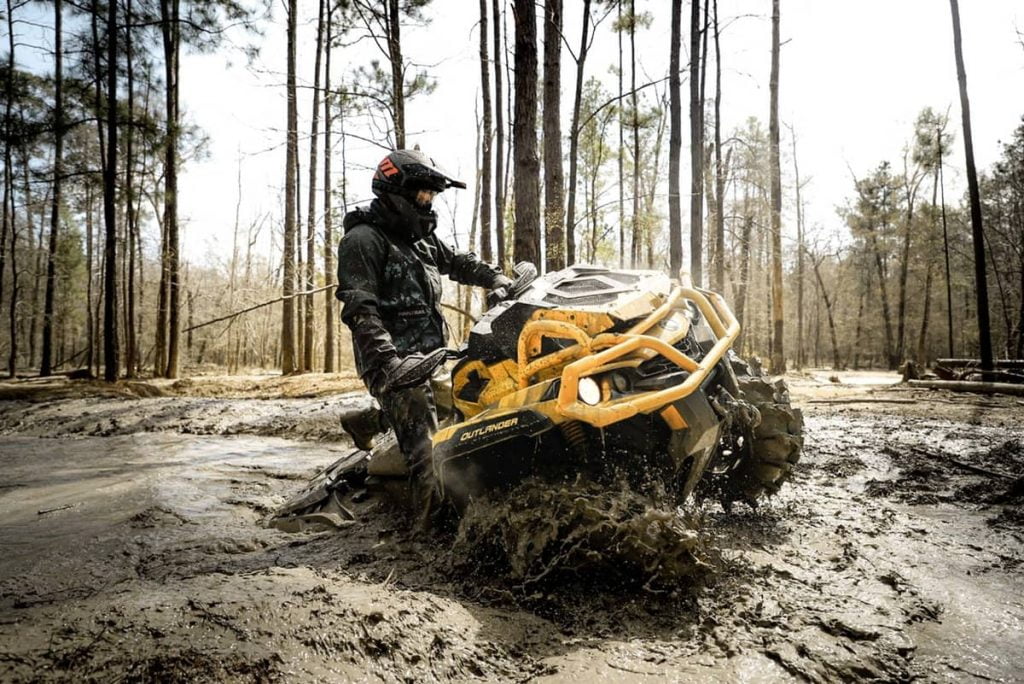
Another example is the 6X6 models offered by Can-Am and Polaris.
These models have one extra rear axle and a flatbed for improved traction and larger cargo capacity.
They are a sworn favorite for utility work in wet and remote locations, but the added length does take a toll on maneuverability.

Other types are Hunting editions with camo print, brush guards, and sturdy cargo racks or 4×4 utility models featuring a cargo flatbed, such as the Textron Alterra TBX.
Utility Side-by-Side (SxS) and UTV
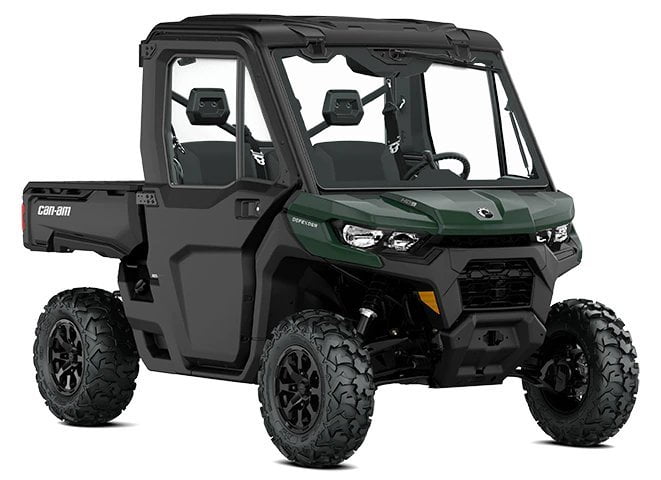
Heading over to the SxS and UTV categories, we find various vehicle types designed to accommodate specific needs, just like ATVs.
All UTV and Sise-by-Sides share these standard features:
- You sit in them, not on them like on an ATV.
- They feature a protective roll cage.
- They operate using a steering wheel and pedals.
- While still providing decent off-road capabilities, they are not as agile and maneuverable in rough terrain as a traditional ATV. They offer a wider track width, lower ground clearance, and higher overall weight, limiting their off-road capabilities depending on your riding terrain.
A utility UTV (SxS) is designed to aid farmers, ranchers, and professionals in daily operations. They perform many of the same tasks traditionally done by a pick-up truck but with even more impressive off-road capabilities and convenience for the operator.
Characteristic features of a Utility UTV (SxS):
- Easy to get in and out, which comes in handy when performing mobile tasks such as fencing or supervising the cattle herd.
- It has an easily accessible cargo box with a payload capacity of 1000lb to 1500lb.
- They Will fit two to three people, the driver plus one or two passengers.
- With independent suspension on all four wheels and an optional closed cabin, they provide a comfortable ride around your farm.
Usage | Not Suited | Suited | Well Suited |
Recreational trail riding and exploring | X | ||
Farm work (utility) | X | X | |
Hauling cargo, hunting, camping | X | ||
Racing | X | X | |
Mudding | X | ||
Rock crawling | X | ||
Accessing remote locations | X | ||
Desert/dune riding | X | ||
Youth riders | X |
Related: What is an RTV Vehicle? ATV vs. RTV vs. UTV Explained
Crew Cab UTV
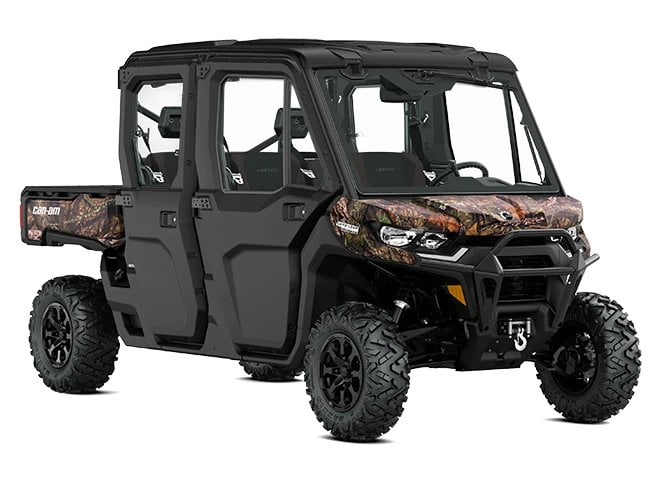
A crew cab UTV is to utility UTVs like a touring ATV is to rec/utility ATVs. They share many of the same features as a utility UTV but come with an extra row of seats to fit more passengers. Both sports UTVs and utility UTVs come in crew cab configurations. Some models feature a longer wheelbase to accommodate more seats, while others feature a smaller cargo box than the 2-up models.
Crew cab UTVs will fit four to six people, depending on your chosen model. Like ATVs, the increased wheelbase makes them heavier, a bit harder to navigate in rough terrain, and slightly more expensive.
Sport Side-By-Side (SxS) and UTV
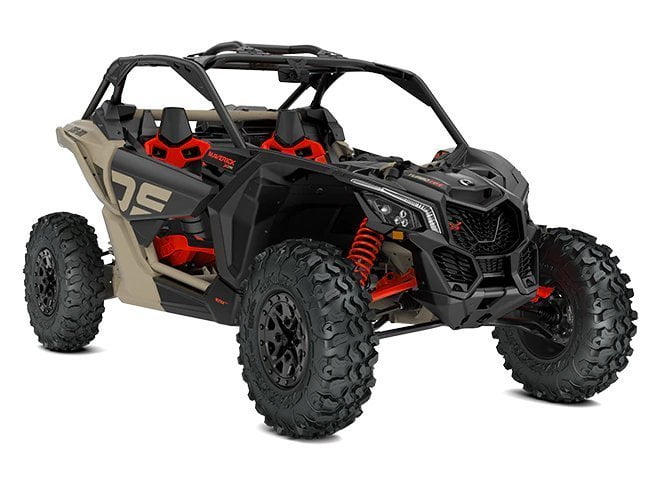
Sport Side-By-Sides is all about performance. No other vehicle offers such an impressive combination of acceleration, extreme suspension, speed, and handling over any terrain out of the box.
They can handle jumps, high-speed cornering, bumpy roads, and hardcore terrain like a walk in the park. If you’re looking for adrenaline, you’d be hard-pressed to find a more suitable off-road vehicle.
Note that Side-By-Sides prefers open terrains over narrow forest trails full of obstacles. They thrive in the desert but may not be the best option for the forest.
Characteristic features of a Sport Side-By-Side (SxS):
- They offer unmatched off-road performance in open terrains such as deserts, open plains, or mountain roads and trails.
- The chassis is typically wider than a utility UTV, with a low center of gravity.
- It features powerful engines that can reach over 200 horsepower and adjustable suspension similar to Dakar rally cars and dune buggies.
- It can fit two people or four to six in a crew-cab configuration.
- The rider and passengers each have their seat, featuring 4-point harness seatbelts.
- Manufacturers offer models expressly set up for rock crawling, mud bashing, or dune riding.
- They are unsuitable for utility work, such as hauling or carrying cargo.
- They do not have a cargo bed.
Usage | Not Suited | Suited | Well Suited |
Recreational trail riding and exploring | X | ||
Farm work (utility) | X | ||
Hauling cargo, hunting, camping | X | ||
Racing | X | ||
Mudding | X | ||
Rock crawling | X | ||
Accessing remote locations | X | ||
Desert/dune riding | X | ||
Youth riders | X |
Youth SxS UTV
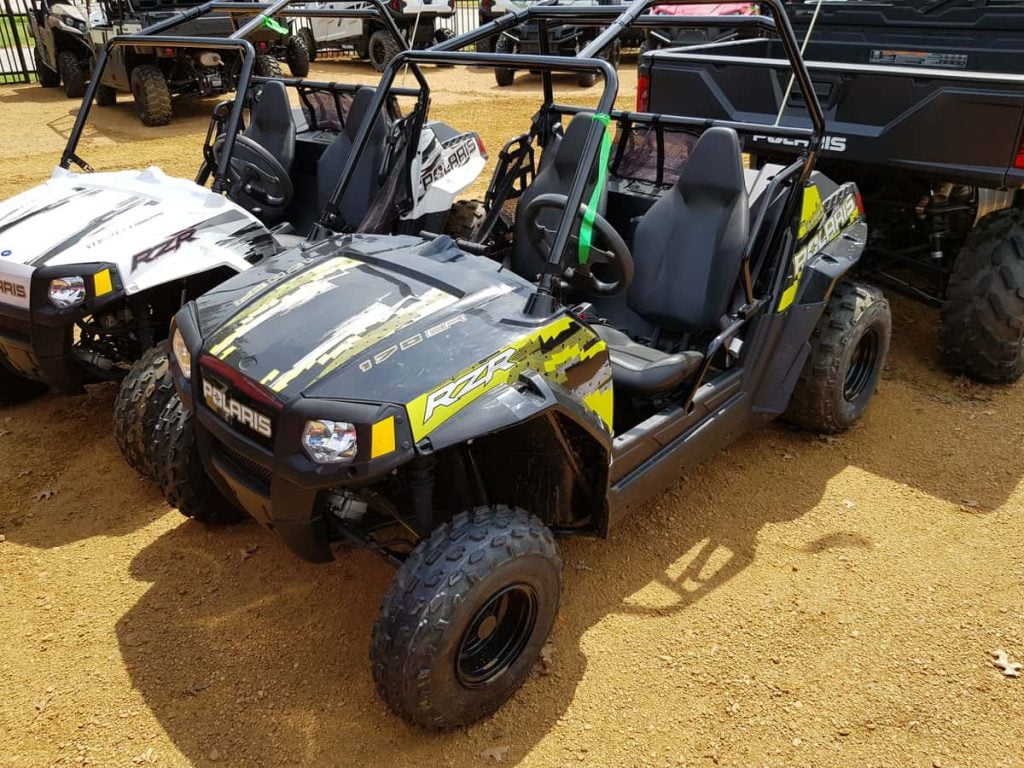
A youth Side-By-Side is a scaled-down adult-size SxS designed for younger riders, ten years old or older. This type of ATV is becoming increasingly more popular than traditional youth ATVs due to safety features such as
- An adjustable speed limiter
- Child-friendly performance
- Age-appropriate ergonomics
- Protective roll cage
- Seat + seatbelt configuration
Please note that even though a youth ATV offers many compelling safety features, it doesn’t mean accidents can’t happen. If the vehicle rolls over into a ditch, it is crucial for the child’s safety that the riding only happens under adult supervision and in a controlled environment.
PS: While most of the photos in this post display Can-Am ATVs and UTVs, these are only meant as examples. Polaris, Honda, Yamaha, Textron (Arctic-Cat), Kawasaki, and CF Moto are other well-reputed manufacturers to look into. This post is only Can-Am-heavy because they were nice enough to allow me to use their photos on this site.
Related: 8 Vehicle Types That Are Similar to ATVs
Wrapping Up
In conclusion, this comprehensive comparison of ATVs and UTVs highlights the diverse range of options available, each tailored to specific needs, terrains, and uses.
Whether you’re seeking a vehicle for recreational trail riding, heavy-duty work, racing performance, or youth-oriented supervised play, this guide offers valuable insights to help you make an informed decision.
